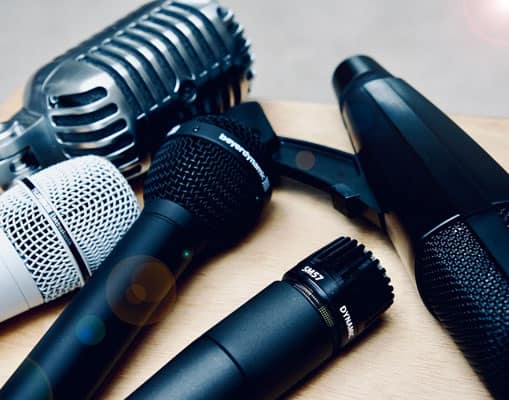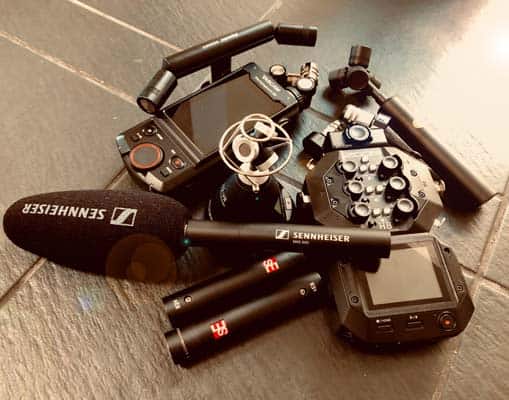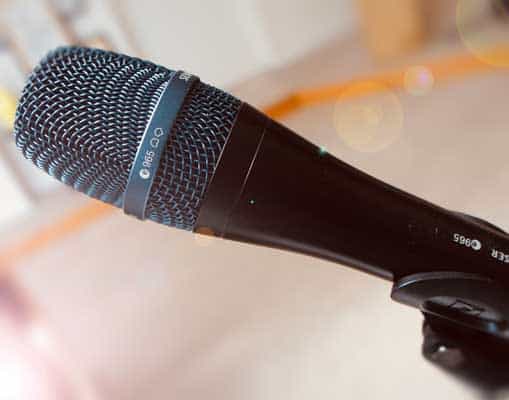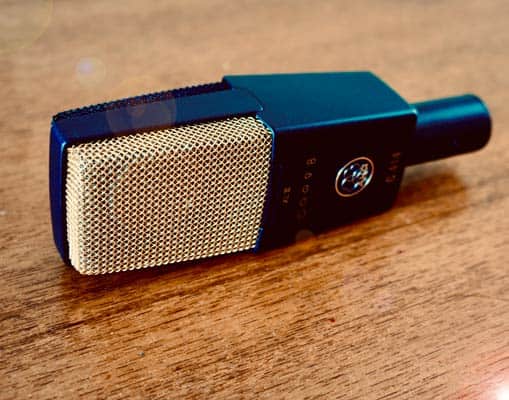What is Microphone Frequency Response?
Microphone frequency response is the output level of a microphone across its entire frequency range.
When we delve into the realm of microphone frequency response, we encounter a graphical representation known as a frequency response diagram like the one below for the Neumann TLM 103.
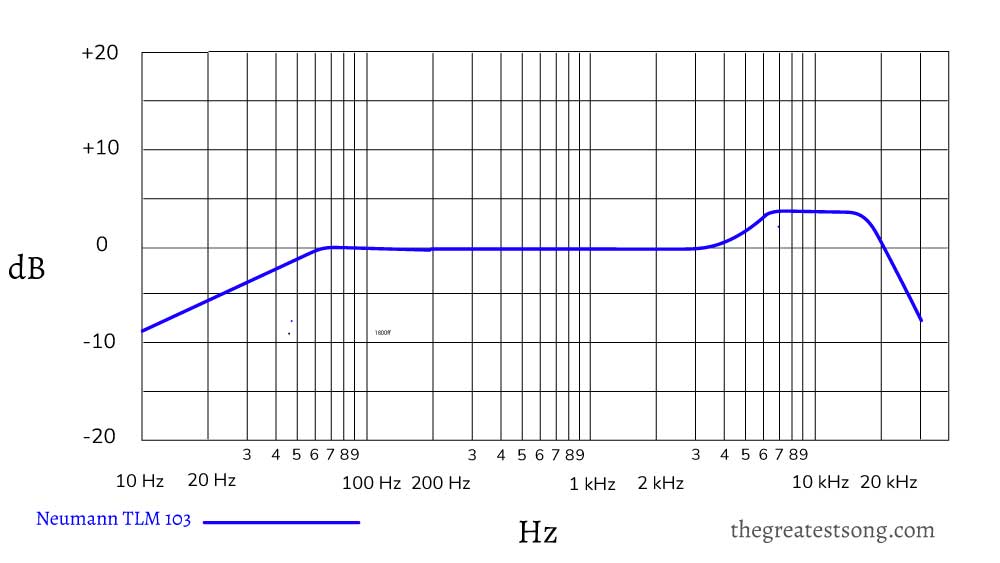
See here for more on microphones and how they work and all things audio equipment.
How Microphone Frequency Response is Measured
Microphone manufacturers measure frequency response with expensive equipment in a crazy-expensive room. To do this properly, you need an acoustically isolated room that does not create unwanted sound reflections, also known as an anechoic chamber.
The mic is placed in front of a speaker and a sine wave is produced and swept from 20 Hz to 20 kHz. The mic’s response is then plotted on a frequency response curve, also known as a frequency response diagram.
This visual depiction allows us to understand how a microphone will respond within the audio spectrum. The diagram shows which frequencies the mic is sensitive to and which frequencies it is less sensitive to.
How to Read a Frequency Response Diagram
The x-axis of the diagram illustrates the frequency range, typically measured in Hertz (Hz). It represents the span of frequencies that the microphone is capable of capturing.
The x-axis is usually on a logarithmic scale which is closer to the way we listen to music than a linear scale. A logarithmic scale is spaced in octaves. Every time the frequency is doubled, you have a new octave. So the distance from 100 to 200 Hz is the same width as 1K to 2K.
The y-axis displays the relative response of the microphone in decibels (dB), indicating how the microphone will amplify or attenuate different frequencies.
Note: Always check out the y-axis and how it is scaled. If it is super wide, mountainous readings can look deceivingly flat.
What a Frequency Response Diagram Tells You (And What it Doesn’t Tell You)
Microphone manufacturers commonly specify the frequency response of their products by indicating the frequency range that the microphone can faithfully reproduce. For instance, you might come across specifications like 20-20,000 Hz, which is not all that helpful.
A frequency response diagram gives you a lot more information. As frequency response changes depending on the microphone’s polar pattern, you will often find multiple diagrams for microphones with more than one polar pattern.
Diagrams also often contain a graph showing how frequency response is affected by a microphone’s proximity effect.
Frequency response tells you a lot about the sound. For example, if your mic has a +5dB boost at around 8 Khz, you know the mic will have a brilliant response in the high-mids or too much sibilance.
What a frequency response diagram will not tell you, however, is whether this +5dB boost is pleasant to the ears or not. The diagram does not consider harmonic distortion or other elements that effect the overall experience.
Understanding Frequency Bands: Bass, Mids, Highs and All That
To get an idea of what you’re looking for in a frequency response curve, it’s useful to consider different areas of frequency and observe the sounds that occur in each of these ranges.
In the diagram below, you will see a frequency response diagram broken down into five frequency bands or frequency ranges. Engineers and audiophiles often say things like, “the sound needs more bottom” or “give it some edge”. These terms are listed below the diagram approximately where you will find them in frequency.
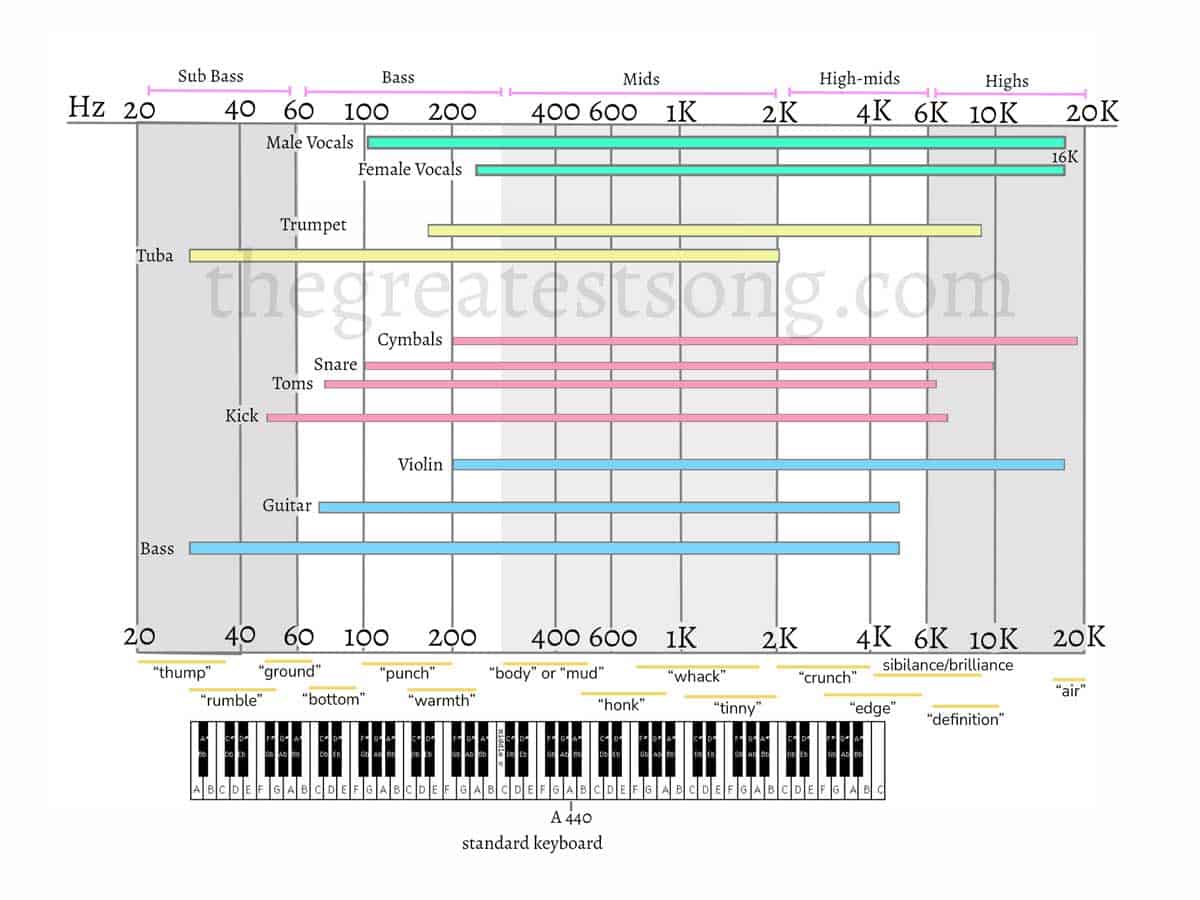
Let’s get into each the frequency bands and what you will find therein.
Sub Bass (below 60 Hz)
Your ears won’t hear much in this range. It’s the more felt-than-heard range. Kick drums and bass amps will give you some response down here.
Bass (60 – 300 Hz)
This is where the fundamental frequencies of most instruments lie. The chest fundamentals in voices lie in this range. A guitar’s lowest string in standard tuning rings around 80 Hz
Midrange (300 – 2K)
Our ears become sensitive to details in this range. The overall character of recordings lies in this band.
The low mids lie around 300-500Hz, where the “mud” resides. Too much response here is muddy, too little lacks body.
High Mids (2K – 6K)
Our ears pick up the most in this range. The intelligibility of text, consonants, and “cut” or “edge” reside in this band.
What is known as presence falls usually around 4 – 6K. If the response attenuates in this range, the source can sound like it is in another room.
Highs (6K – 20K)
A lot happens up here in the clouds. Condenser mics excel in this range, picking up details that other mics miss.
Between 6 and 9 K the sibilance or ’s’ sounds of voices and string sounds reside. Too much boost here and you’ll have unpleasant sibilance, too little and the sound lacks brilliance.
Finally, the “air” at the top, the lovely headroom in recordings sits around 16-20K. Too much sounds unnatural and odd, too little can sound less open.
Typical Frequency Response in Dynamic, Ribbon, and Condenser Mics
Each of the four main types of microphones has a typical response. The following descriptions should be taken with a grain of salt – there are always exceptions.
Dynamic Microphones
Dynamic microphones (such as the Shure SM57, SM7B or Electrovoice RE20) that utilize a moving-coil design exhibit distinct characteristics in terms of frequency response.
A dynamic microphone’s innards has resonators and dampers carefully controlling the captured sound. As a result, it is difficult to make a dynamic mic with a flat frequency response. These carefully controlled resonances however, mean dynamic mics are often custom built for specific applications.
Generally, within the audible spectrum, dynamic mics often exhibit a roll-off in the high-end frequencies, resulting in a slight reduction in the uppermost frequencies.
Ribbon Microphones
In the midrange, ribbon mics generally deliver a flat response, meaning that they capture sound without introducing significant tonal alterations. However, ribbon mics exhibit a gentle roll-off of high-end frequencies, resulting in a gradual reduction in the upper frequencies.
Condenser Microphones
Large-diaphragm Condensers
Large-diaphragm condenser microphones (examples include: Neumann TLM 102, Rode NT1A, AKG C214) ideally provide a relatively flat response, meaning that they capture sound accurately without emphasizing or attenuating specific frequencies.
These microphones also exhibit a gentle roll-off in the low-end frequencies, ensuring that excessive bass frequencies are controlled and balanced. There is often a boost in sensitivity in the upper-mid and/or high-end frequencies followed by a roll-off at the very top.
Small-diaphragm Condensers
Small-diaphragm condenser microphones, similar to their large-diaphragm counterparts, aim to offer a flat frequency response, with varying degrees of success.
Because they excel in the high frequencies, they tend to be the tool-of-choice when it comes to “high-res” recording above the range of human hearing (greater than 20 kHz).
Questions or Comments?
Follow the discussion here on Facebook.
